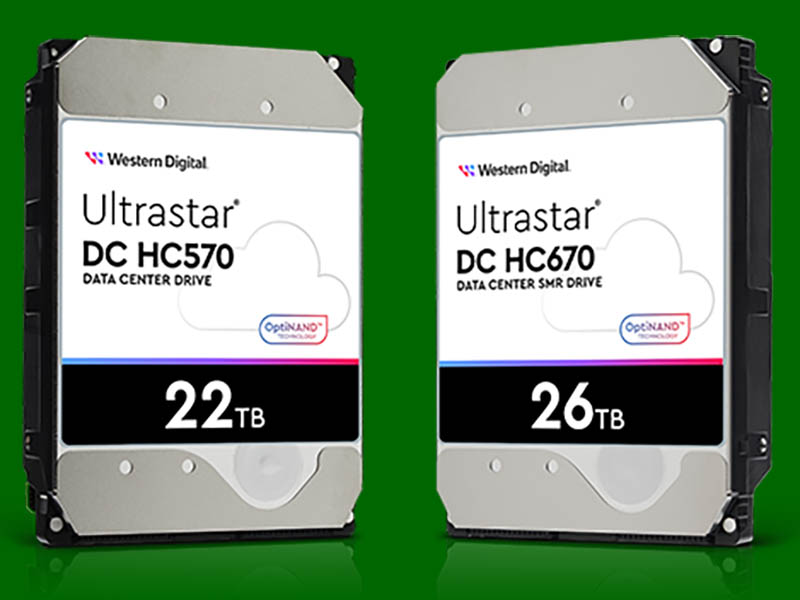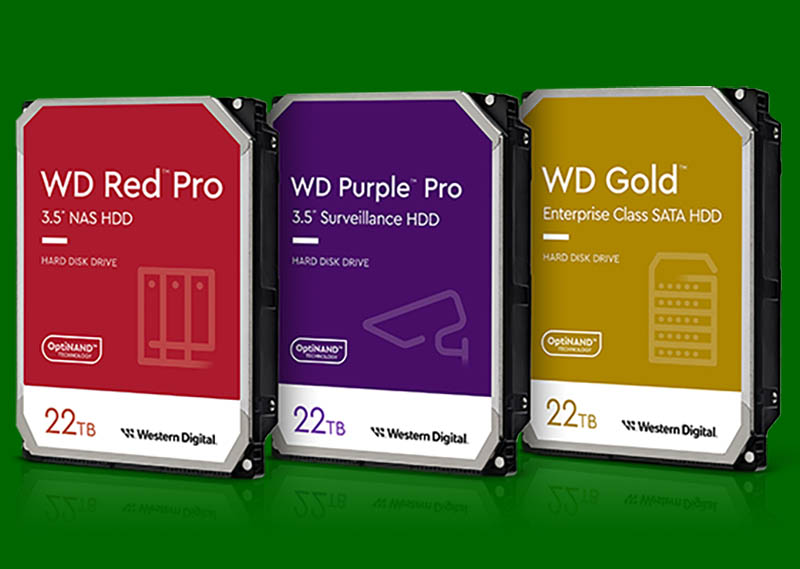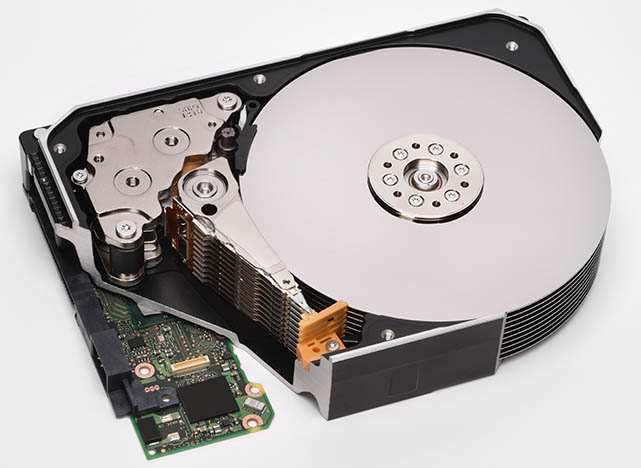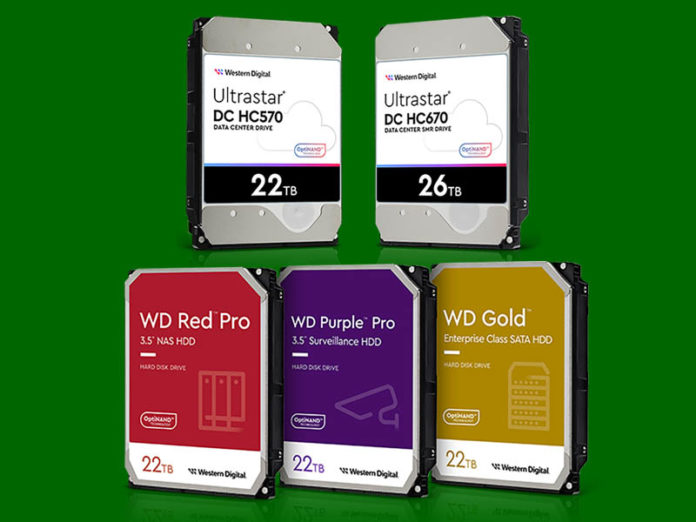This week, Western Digital announced a slew of new hard drives. These drives are set to slightly increase capacities over today’s drives. Still, it is a move in the right direction for the company, even if it is showing how slow innovation has become in the hard drive space as the market participants dwindled.
WD Ultrastar DC HC570 22TB and Ultrastar DC HC670 26TB Drives
WD has two new drives for the data center space. The WD Ultrastar DC H570 is the company’s 22TB drive that uses CMR. The WD Ultrastar DC H670 is the company’s SMR drive that allows for 4TB more to be stored or roughly 18% more at 26TB total capacity.

Both drives use OptiNAND technology as WD tries to integrate NAND into its hard drives to improve performance. The SanDisk merger and business have been under fire recently with activist investors suggesting the merger has failed and the company should be split despite the use of OptiNAND in the hard drive segment.
WD 22TB Red Pro, Gold, and Purple Pro Drives this Summer
In the announcement, Western Digital also said that the 22TB drives were spanning across its portfolio. That includes a 22TB WD Red Pro, and a 22TB Purple Pro, and a 22TB WD Gold. The NAS segment is serviced by Red. Gold is for integrators. Purple Pro is for video surveillance. These drives have many of the same features such as OptiNAND as the data center drives.

Really what is happening is that WD is putting out a new base drive model, and then seems to be using firmware, marketing, and maybe some binning to make different drives at different price points.
Final Words
One way to look at this is that we get larger hard drives. Another way to look at it is that these drives are only 2TB larger for the CMR segment. This is even with the 10 disk hard drive design, ePMR, and more to the 22TB figure.

That is a 10% generational jump and really highlights the lack of competition and resulting innovation in the hard drive space. Years ago, each generation would be more like 50% larger capacities while also being faster, but once WD and Seagate were allowed to purchase rivals, the market consolidated and thus we get small gains.
The big question now is the workload ratings these drives would get. We already addressed the WD Red Pro 20TB Launched with Wickedly Weak Workload Rating only a few months ago and that we addressed in the workload rating video:
If these end up being released later this summer with 550TB/ year ratings, these would be slightly worse.





What is the point of a SMR data center grade HDD?
@Soto Archives? In which case, you only care about density, so get a tape drive?
What we need to see in new HDDs:
1. Head redundancy – 2 head per surface
2. Multi-track capability – drive has to be able to R/W over multiple heads at once. This means that individual
heads have to be able to servo follow their “grooves” independently through micro-piezo or similar tech.
3. Drives have to have greater degree of inspectability ( smarter SMART), survivability and serviceaility ( interchangeable electronics).
4. more emphasis on long term storage endurance
5. robustness under harsh environment ( heat cycling, humidity, acidity, vibration)
6. capacity jump would be nice
And BTW 7 would be nice:
No limitation of un/park cycles. That one seems stupid in 2022. Why would simply un/parking a head cause perceptible wear&tear ?
>Me; “Wow 20TB’s, 22TB’s and 26TB hard drives….”
>See CMR…
>In the bin it goes.
WD is doing everything it can to destroy its good reputation they’ve built over the past decade with these CMR’s.
@MegaTechGuy:
What do you mean by:
“>See CMR…
>In the bin it goes.”
CMR = Conventional Magnetic Recording.
CMR is far better than SMR (Shingled Magnetic Recording) for write speeds since one track can be recorded independently without having to erase and re-write multiple tracks just to update one track.
SMR = Great technology for Archival where you don’t have to rewrite data over and over again. It’s mainly designed as an archival media for writing data once and keeping it for posterity, while just reading it over again and again.
Please don’t pretend talk technology when you don’t understand them. Some hapless poor guy will see your comment and think, ah this genius says CMR is crap, so maybe it is.